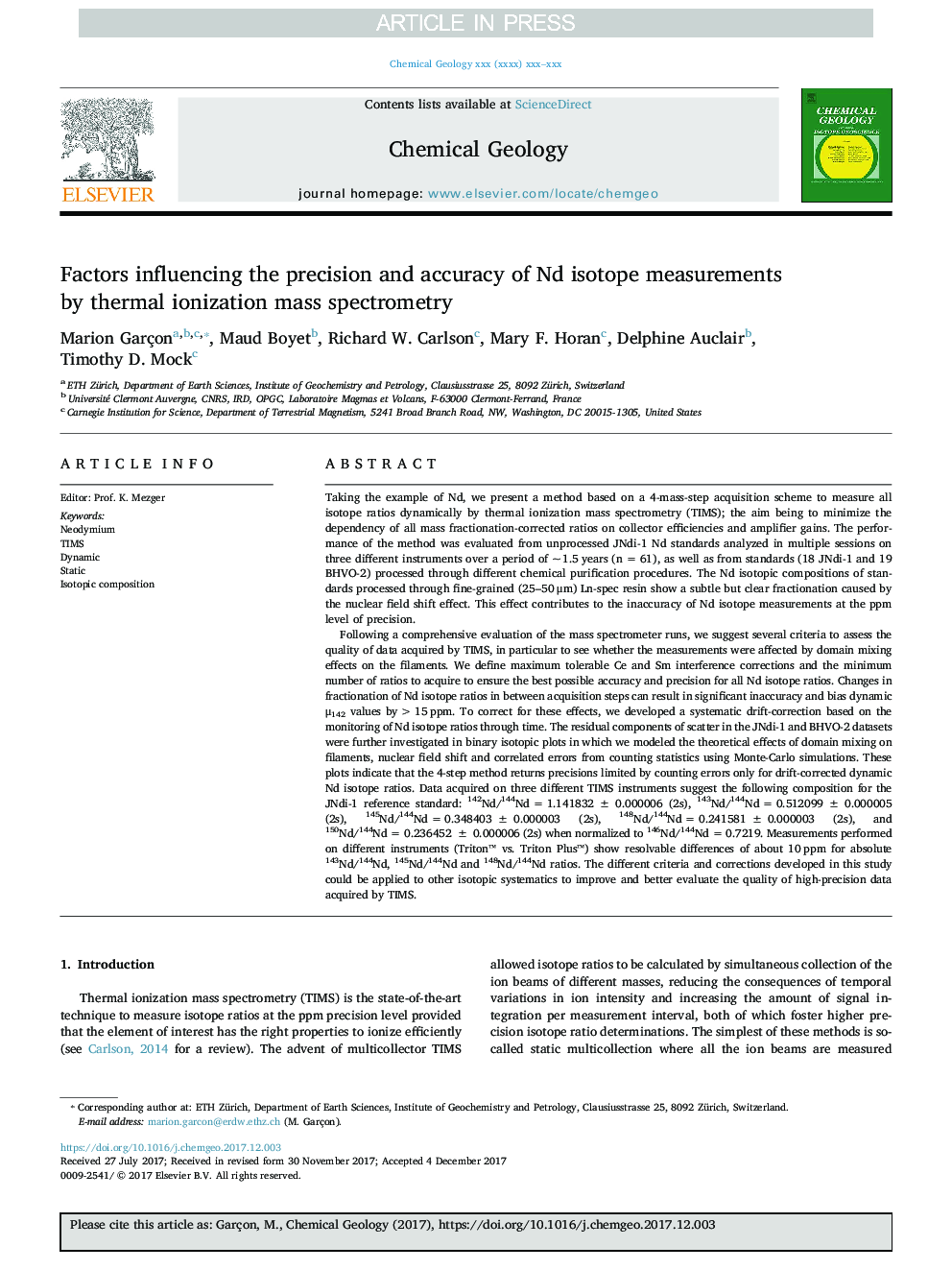| کد مقاله | کد نشریه | سال انتشار | مقاله انگلیسی | نسخه تمام متن |
|---|---|---|---|---|
| 8910493 | 1637498 | 2018 | 22 صفحه PDF | دانلود رایگان |
عنوان انگلیسی مقاله ISI
Factors influencing the precision and accuracy of Nd isotope measurements by thermal ionization mass spectrometry
دانلود مقاله + سفارش ترجمه
دانلود مقاله ISI انگلیسی
رایگان برای ایرانیان
کلمات کلیدی
موضوعات مرتبط
مهندسی و علوم پایه
علوم زمین و سیارات
ژئوشیمی و پترولوژی
پیش نمایش صفحه اول مقاله

چکیده انگلیسی
Following a comprehensive evaluation of the mass spectrometer runs, we suggest several criteria to assess the quality of data acquired by TIMS, in particular to see whether the measurements were affected by domain mixing effects on the filaments. We define maximum tolerable Ce and Sm interference corrections and the minimum number of ratios to acquire to ensure the best possible accuracy and precision for all Nd isotope ratios. Changes in fractionation of Nd isotope ratios in between acquisition steps can result in significant inaccuracy and bias dynamic μ142 values by > 15 ppm. To correct for these effects, we developed a systematic drift-correction based on the monitoring of Nd isotope ratios through time. The residual components of scatter in the JNdi-1 and BHVO-2 datasets were further investigated in binary isotopic plots in which we modeled the theoretical effects of domain mixing on filaments, nuclear field shift and correlated errors from counting statistics using Monte-Carlo simulations. These plots indicate that the 4-step method returns precisions limited by counting errors only for drift-corrected dynamic Nd isotope ratios. Data acquired on three different TIMS instruments suggest the following composition for the JNdi-1 reference standard: 142Nd/144Nd = 1.141832 ± 0.000006 (2s), 143Nd/144Nd = 0.512099 ± 0.000005 (2s), 145Nd/144Nd = 0.348403 ± 0.000003 (2s), 148Nd/144Nd = 0.241581 ± 0.000003 (2s), and 150Nd/144Nd = 0.236452 ± 0.000006 (2s) when normalized to 146Nd/144Nd = 0.7219. Measurements performed on different instruments (Triton⢠vs. Triton Plusâ¢) show resolvable differences of about 10 ppm for absolute 143Nd/144Nd, 145Nd/144Nd and 148Nd/144Nd ratios. The different criteria and corrections developed in this study could be applied to other isotopic systematics to improve and better evaluate the quality of high-precision data acquired by TIMS.
ناشر
Database: Elsevier - ScienceDirect (ساینس دایرکت)
Journal: Chemical Geology - Volume 476, 5 January 2018, Pages 493-514
Journal: Chemical Geology - Volume 476, 5 January 2018, Pages 493-514
نویسندگان
Marion Garçon, Maud Boyet, Richard W. Carlson, Mary F. Horan, Delphine Auclair, Timothy D. Mock,